Rumors have spread far and wide suggesting that the sensational stone cut holy places of Lalibela were made with the assistance of a group of heavenly messengers. Covered profound into the stone in the good countries of northern Ethiopia, the 11 solid temples were implicit the late twelfth and mid thirteenth Hundreds of years by Ruler Lalibela, who, so he guaranteed, had constructed the houses of worship on the guidance from God.
The Lalibela churches were envisioned as a “new” Jerusalem and a place of pilgrimage for Ethiopia’s large Orthodox Christian community because the Crusades were in full swing and Jerusalem’s pilgrimage sites were too dangerous to visit.
Today, the temples stay a significant spot of journey for Ethiopia’s Christians. They are also a Unesco World Heritage Site, and tourists from all over the world come to see one of the most extraordinary historical locations in Africa.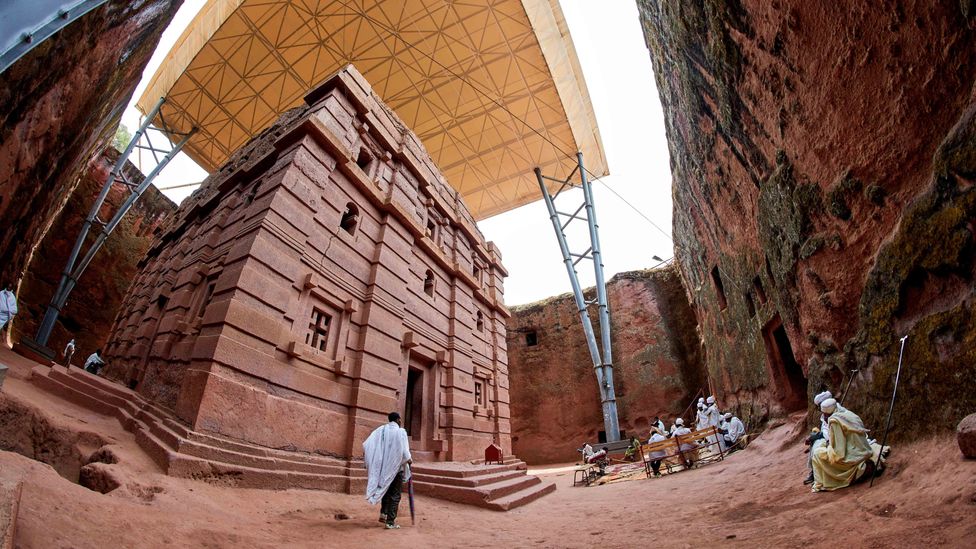
According to local guide Workeye Desale Alemu, there are two possible reasons why the churches were buried into the rock. The first was as a form of protection: during proceeding centuries, Muslim invaders had destroyed many of the more obvious churches, and so King Lalibela thought (rightly, as it turned out) that burying them would keep them safely hidden from potential attackers. The other reason, according to Alemu, is that King Lalibela “was also inspired by the Biblical account that Jesus was born in a cave in Bethlehem and was buried in a cave in Golgotha”.
Whatever the reason, the churches at Lalibela are architecturally remarkable. One of the churches, Bete Medhane Alem, which is 33m long, 23m wide and 10m high, is considered to be the largest monolithic church in the world; while the Bete Amanuel church (pictured above), is known for its fine stone carvings. It’s been suggested that this church actually started life as a royal residence for King Lalibela.
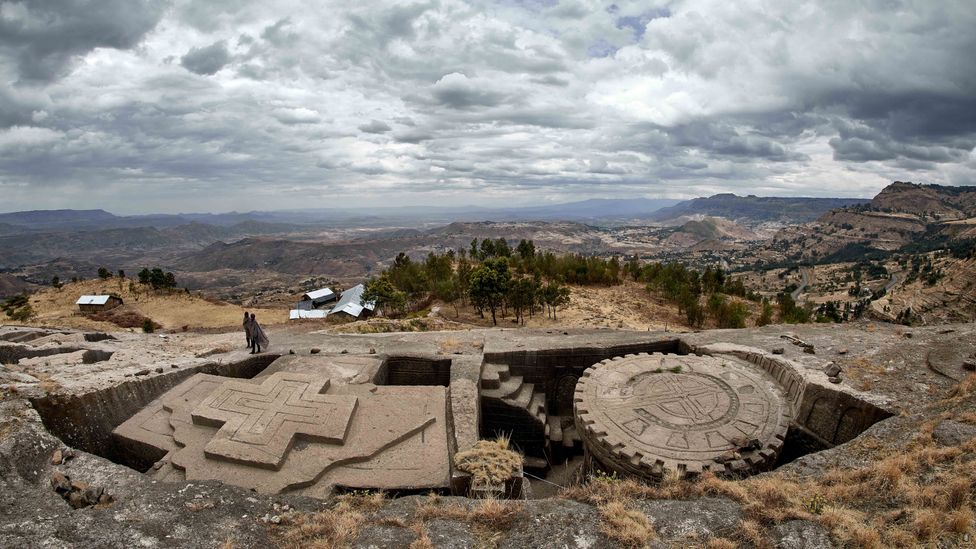
It takes big ambitions to set out to build a “New Jerusalem” and you might think that after King Lalibela completed his masterpiece that nobody else would dare to try and top it. But on a lonely mountain slope around 60km south of Lalibela, a devoted monk and two church deacons are busy chipping away at the rock to create an extraordinary new version of the churches.
They are building Dagmawi Lalibela (which means the second Lalibela). Work – which is all being done by hand – started in 2010, and they have so far constructed seven monolithic churches. When completed, like Lalibela, the complex will consist of 11 rock-hewn churches. Abu Gebre Meskel Tesema, a solitary monk and hermit, rarely gives interviews, but he is on record as saying that one of the reasons he is constructing the churches is to prove wrong those who claim that the original Lalibela churches must have been built with foreign help.
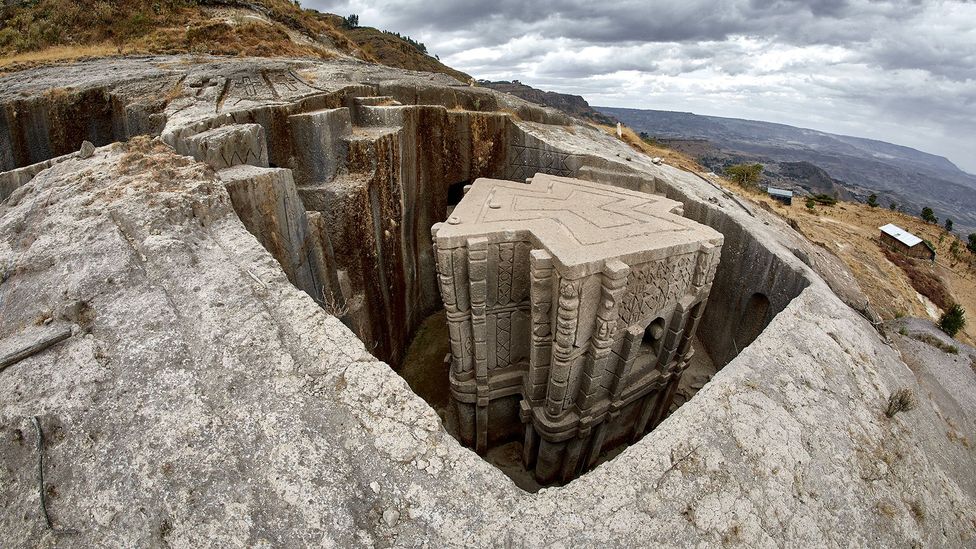
Some of the reasons Tesema chose this site for the second Lalibela is because of the nearby presence of a source of holy water, and because there was already an unfinished cave church near the site, the construction of which has been attributed to King Lalibela himself. Alemu also says that the exposed cliff and rock face construction of churches makes them “closer to God”.
The overall style of Dagmawi Lalibela is very similar to the original, too. Both have bold, and sometimes colourful, carvings inside and out, One is even carved in the shape of a crucifix reminiscent of the Bete Giyorgis (Church of St George) at Lalibela.
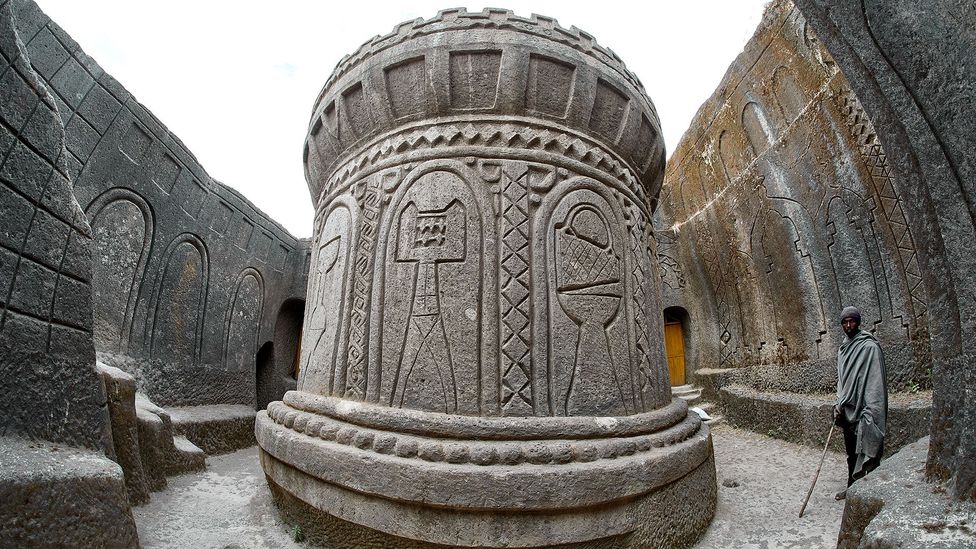
However, the Dagmawai Lalibela churches are considerably smaller than any of the Lalibela churches and the order of construction is also different. At the original Lalibela, both the interior and exterior of the churches are thought to have been carved at the same time while at Dagmawai Lalibela the churches are being constructed from the base up with the exterior carved out first.
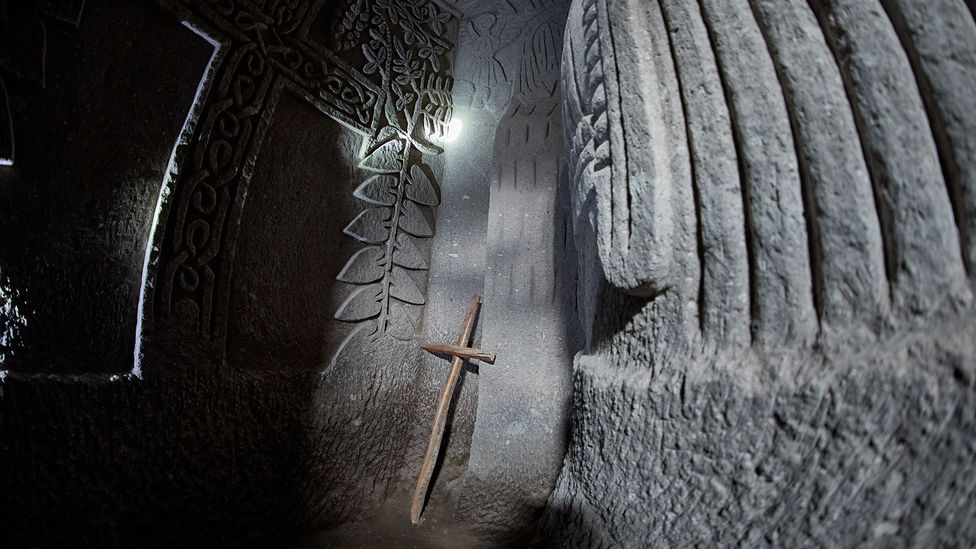
Incredibly, for the first year, Tesema worked completely alone. Today, though, two church deacons have joined him in his task. But, even so, the deacons only help him by clearing and removing rubble while Tesema does all the excavation and carving himself.
“While Tesema is working, he accepts no food and uses no artificial lighting,” one of the deacons told me. “When he is carving the interior of one of the churches, he is often doing it in near darkness.”
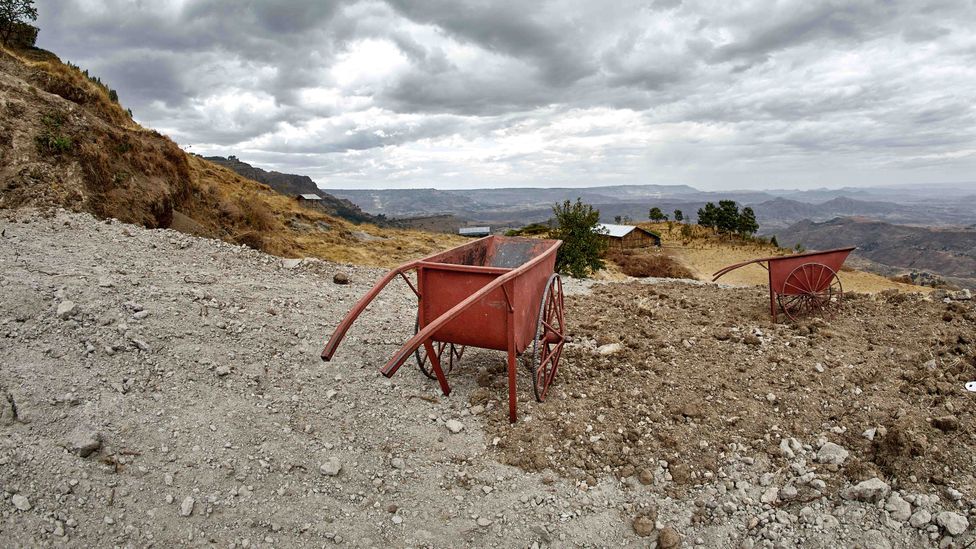
Tesema purposefully uses only the most basic construction tools – just chisels and hammers – as well as building techniques from the time of King Lalibela, so no bricks, no mortar or timber. If that wasn’t enough, there are no overall architectural plans, and all measurements are done by eye.
According to Alemu, using these traditional building techniques “makes people feel more spiritually devoted”.
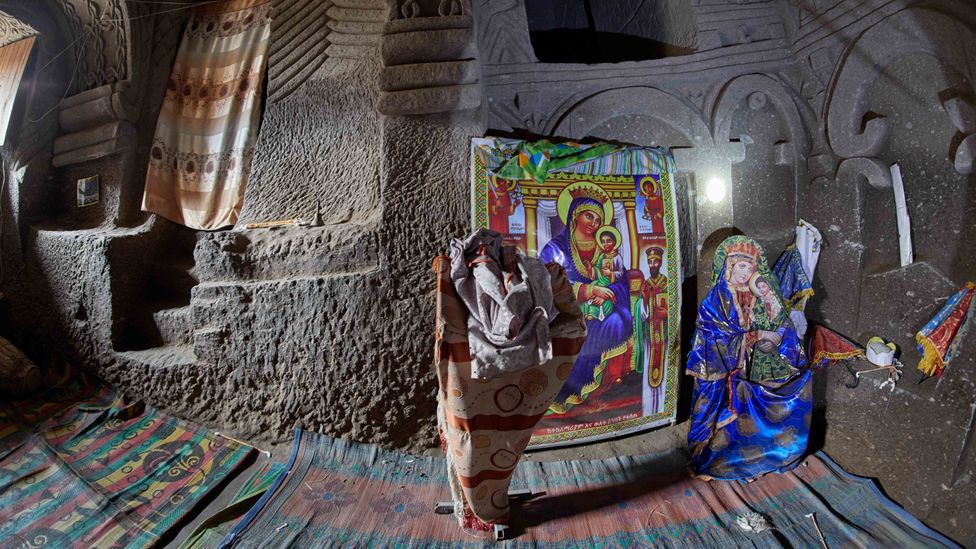
In 2018, the Ethiopian Orthodox church recognised Tesema’s work and the churches were consecrated. Services are now regularly held here for the local community and visitors, and the dimly lit interiors are filled with religious paintings and objects (pictured).
The site can be easily visited as part of a half-day excursion from Lalibela; Tesfa Tours operate a series of community-managed trekking guesthouses and linked walking trails on the escarpment just above Dagmawi Lalibela.
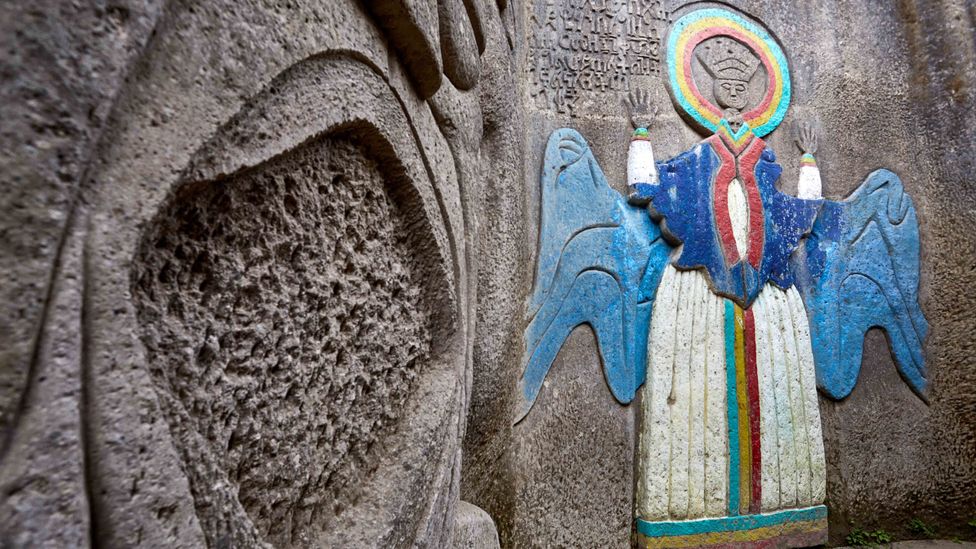
With no more space on the rock face, Tesema has ceased most of his work at this site and is looking for another suitable nearby location where he can construct his final four churches. But even with this pause in proceedings, Tesema and the deacons aim to complete the project in the next few years. They hope that in hundreds of years, Dagmawi Lalibela will be regarded by visitors with the same sense of awe as the New Jerusalem is today.


